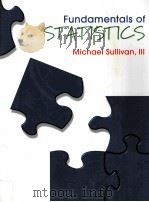《STATISTICS OF EXTREMES》
| 作者 | E.J.GUMBEL 编者 |
|---|---|
| 出版 | 未查询到或未知 |
| 参考页数 | |
| 出版时间 | 没有确切时间的资料 目录预览 |
| ISBN号 | 无 — 求助条款 |
| PDF编号 | 820553218(仅供预览,未存储实际文件) |
| 求助格式 | 扫描PDF(若分多册发行,每次仅能受理1册) |
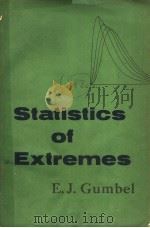
Chapter One:AIMS AND TOOLS1
1.0.Aims1
1.0.1.Conditions1
1.0.2.History2
1.0.3.The Flood Problem4
1.0.4.Methodology5
1.0.5.Arrangement of Contents5
1.1.General Tools7
1.1.1.Linear Transformations7
1.1.2.Other Transformations7
1.1.3.Symmetry8
1.1.4.Measures of Dispersion9
1.1.5.Moments10
1.1.6.Generating Function11
1.1.7.Convolution13
1.1.8.The Gamma Function15
1.1.9.The Logarithmic Normal Distribution16
1.2.Specific Tools20
1.2.0.Problems20
1.2.1.The Intensity Function20
1.2.2.The Distribution of Repeated Occurrences21
1.2.3.Analysis of Return Periods26
1.2.4."Observed"Distributions28
1.2.5.Construction of Probability Papers28
1.2.6.The Plotting Problem29
1.2.7.Conditions for Plotting Positions32
1.2.8.Fitting Straight Lines on Probability Papers34
1.2.9.Application to the Normal Distribution38
Chapter Two:ORDER STATISTICS AND THEIR EXCEEDANCES42
2.1.Order Statistics42
2.1.0.Problems42
2.1.1.Distributions42
2.1.2.Averages43
2.1.3.Distribution of Frequencies46
2.1.4.Asymptotic Distribution of mth Central Values47
2.1.5.The Order Statistic with Minimum Variance51
2.1.6.Control Band52
2.1.7.Joint Distribution of Order Statistics53
2.1.8.Distribution of Distances55
2.2.The Distribution of Exceedances57
2.2.0.Introduction57
2.2.1.Distribution of the Number of Exceedances58
2.2.2.Moments61
2.2.3.The Median63
2.2.4.The Probability of Exceedances as Tolerance Limit64
2.2.5.Extrapolation from Small Samples67
2.2.6.Normal and Rare Exceedances69
2.2.7.Frequent Exceedances72
2.2.8.Summary73
Chapter Three:EXACT DISTRIBUTION OF EXTREMES75
3.1.Averages of Extremes75
3.1.0.Problems75
3.1.1.Exact Distributions75
3.1.2.Return Periods of Largest and Large Values78
3.1.3.Quantiles of Extremes79
3.1.4.Characteristic Extremes82
3.1.5.The Extremal Intensity Function84
3.1.6.The Mode85
3.1.7.Moments87
3.1.8.The Maximum of the Mean Largest Value89
3.2.Extremal Statistics94
3.2.0.Problems94
3.2.1.Absolute Extreme Values94
3.2.2.Exact Distribution of Range97
3.2.3.The Mean Range100
3.2.4.The Range as Tolerance Limit103
3.2.5.The Maximum of the Mean Range106
3.2.6.Exact Distribution of the Midrange108
3.2.7.Asymptotic Independence of Extremes110
3.2.8.The Extremal Quotient111
Chapter Four:ANALYTICAL STUDY OF EXTREMES113
4.1.The Exponential Type113
4.1.0.Problems113
4.1.1.Largest Value for the Exponential Distribution113
4.1.2.Order Statistics for the Exponential Distribution116
4.1.3.L'Hopital's Rule118
4.1.4.Definition of the Exponential Type120
4.1.5.The Three Classes122
4.1.6.The Logarithmic Trend123
4.1.7.The Characteristic Product125
4.2.Extremes of the Exponential Type126
4.2.0.Problems126
4.2.1.The Logistic Distribution126
4.2.2.Normal Extremes,Numerical Values129
4.2.3.Analysis of Normal Extremes136
4.2.4.Normal Extreme Deviates140
4.2.5.Garmma Distribution143
4.2.6.Logarithmic Normal Distribution146
4.2.7.The Normal Distribution as a Distiribution of Extremes147
4.3.The Cauchy Type149
4.3.0.Problems149
4.3.1.The Exponential Type and the Existence of Moments149
4.3.2.Pareto's Distribution151
4.3.3.Definition of the Pareto and the Cauchy Types152
4.3.4.Extremal Properties153
4.3.5.Other Distributions without Moments154
4.3.6.Summary155
Chapter Five:THE FIRST ASYMPTOTIC DISTRIBUTION156
5.1.The Three Asymptotes156
5.1.0.Introduction156
5.1.1.Preliminary Derivation156
5.1.2.The Stability Postulate157
5.1.3.Outline of Other Derivations162
5.1.4.Interdependence164
5.2.The Double Exponential Distribution166
5.2.0.Introduction166
5.2.1.Derivations166
5.2.2.The Methods of Cramér and Von Mises170
5.2.3.Mode and Median172
5.2.4.Generating Functions173
5.2.5.Standard and Mean Deviations174
5.2.6.Probability Paper and Return Period176
5.2.7.Comparison with Other Distributions179
5.2.8.Barricelli's Generalization184
5.3.Extreme Order Statistics187
5.3.0.Problems187
5.3.1.Distribution of the mth Extreme187
5.3.2.Probabilities of the mth Extreme189
5.3.3.Generating Functions192
5.3.4.Cramér's Distribution of mth Extremes194
5.3.5.Extreme Distances197
5.3.6.The Largest Absolute Value and the Two Sample Problem198
Chapter Six:USES OF THE FIRST ASYMPTOTE201
6.1.Order Statistics from the Double Exponential Distribution201
6.1.0.Problems201
6.1.1.Maxima of Largest Values201
6.1.2.Minima of Largest Values203
6.1.3.Consecutive Modes206
6.1.4.Consecutive Means and Variances208
6.1.5.Standard Errors212
6.1.6.Extension of the Control Band216
6.1.7.The Control Curve of Dick and Darwin218
6.2.Estimation of Parameters219
6.2.0.Problems219
6.2.1.Exponential and Normal Extremes219
6.2.2.Use of Order Statistics223
6.2.3.Estimates for Probability Paper226
6.2.4.Sufficient Estimation Functions,by B.F.Kimball229
6.2.5.Maximum Likelihood Estimations,by B.F.Kimball231
6.2.6.Approximate Solutions232
6.2.7.Asymptotic Variance of a Forecast,by B.F.Kimball234
6.3.Numerical Examples236
6.3.0.Problems236
6.3.1.Floods236
6.3.2.The Design Flood238
6.3.3.Meteorological Examples241
6.3.4.Application to Aeronautics245
6.3.5.Oldest Ages246
6.3.6.Breaking Strength248
6.3.7.Breakdown Voltage249
6.3.8.Applications to Naval Engineering251
6.3.9.An Application to Geology254
Chapter Seven:THE SECOND AND THIRD ASYMPTOTES255
7.1.The Second Asymptote255
7.1.0.Problems255
7.1.1.Fréchet's Derivation255
7.1.2.The Cauchy Type259
7.1.3.Averages and Moments264
7.1.4.Estimation of the Parameters266
7.1.5 The Increase of the Extremes269
7.1.6.Generalization270
7.1.7.Applications271
7.1.8.Summary272
7.2.The Third Asymptote272
7.2.0.Introduction272
7.2.1.The Von Mises Derivation273
7.2.2.Other Derivations276
7.2.3.Averages and Moments of Smallest Values280
7.2.4.Special Cases285
7.2.5.The Increase of the Extremes287
7.2.6.The 15 Relations Among the 3 Asymptotes288
7.3.Applications of the Third Asymptote289
7.3.0.Problems289
7.3.1.Estimation of the Three Parameters289
7.3.2.Estimation of Two Parameters293
7.3.3.Analytical Examples298
7.3.4.Droughts299
7.3.5.Fatigue Failures302
Chapter Eight:THE RANGE306
8.1.Asymptotic Distributions of Range and Midrange306
8.1.0.Problems306
8.1.1.The Range of Minima307
8.1.2.Generating Function of the Range308
8.1.3.The Reduced Range309
8.1.4.Asymptotic Distribution of the Midrange311
8.1.5.A Bivariate Transformation312
8.1.6.Asymptotic Distribution of theRange316
8.1.7.Boundary Conditions320
8.1.8.Extreme Ranges321
8.1.9.Summary324
8.2.Extremal Quotient and Geometric Range324
8.2.0.Problems324
8.2.1.Definitions325
8.2.2.The Extremal Quotient326
8.2.3.The Geometric Range327
8.3.Applieations331
8.3.0.Problems331
8.3.1.The Midrange331
8.3.2.The Parameters in the Distribution of Range333
8.3.3.Normal Ranges336
8.3.4.Estimation of Initial Standard Deviation338
8.3.5.Climatological Examples340
Summary345
Bibliography349
Index373
1.2.9.Normal Standard Deviation σn as Function of Sample Size n39
2.1.2.Probabilities of Modal mth Values45
2.1.6.Reduced Standard Errors σ(?m)?n.for Unit Standard Deviation52
2.2.1.The Probabilities w(5,m,5,x)60
2.2.7.The Six Limiting Distributions of Exceedances73
4.1.6.The Three Classes of Distributions of the Exponential Type125
4.2.2(1).Normal Extremes130
4.2.2(2).Characteristic Normal Extremes un for Large Samples133
4.2.2(3).Normal Extremes and Intensity133
5.1.1.The Three Asymptotic Probabilities of Largest Values157
5.1.3(1).Asymptotic Probabilities of Initial Variates162
5.1.3(2).Asymptotic Probabilities of Extreme Values164
5.2.4.Semivariants of the First Asymptote174
5.2.6.The Three Curvatures of Largest Values178
5.2.7.Selected Probabilities for Normal and Largest Values180
5.3.2.Asymptotic Probabilities of the Three Largest Values190
5.3.3.Characteristics of mth Extremes194
6.1.1.Extreme Values for the Double Exponential Distribution202
6.1.2(1).Characteristic Minima204
6.1.2(2).Probabilities of Maxima and Minima of Largesi Values205
6.1.2(3).The Iterated Natural Logarithm205
6.1.5.Standard Errors of Reduced Central Values214
6.1.6.The Extreme Control Band218
6.2.2.The Weights in Lieblein's Estimator for N=4,5,6215
6.2.3.Means and Standard Deviations of Reduced Extremes228
6.3.2.The Standardized Flood zω for Some Rivers240
6.3.5.Modal Values and Characteristic Oldest Ages,U.S.A.1939-41248
7.2.3.Reduced Averages and Third Moment of the Third Asymptote282
7.2.4.The Four Pseudosymmetrical Cases285
7.2.6.Asymptotic Probabilities of Iterated Extremes288
7.3.4.Analysis of Droughts301
7.3.5.Parameters for Fatigue Failures of Nickel304
8.1.5.Asymptotic Distribution and Probability of ?316
8.1.6.Characteristics of Reduced Extremes,Range,and Midrange319
8.1.8.Modal Extreme Reduced Ranges323
8.2.3.Transformations of Extremes to Extremal Statistics330
8.3.1(1).Population Standard Deviation of the Midrange331
8.3.1(2).Observed Midranges of Lives of Bulbs(in Ten Hours)332
8.3.2.Population Mean and Standard Deviation of the Range334
8.3.4.Characteristics for Normal Ranges340
8.3.5(1).Frequencies of Dew Points,Washington,D.C.,1905-1945343
8.3.5(2).Annual Range of Temperature in C°,Bergen,Norway,1878-1926343
8.3.5(3).Annual Range of Temperature in F°,New Haven,Connec-ticut,1907-1948343
8.3.5(4).Estimation of the Parameters for the Four Ranges344
1.1.9.Characteristics for the Logarithmic Normal Distribution19
1.2.1.Intensity Functions μ(x)22
1.2.2(1).Control Intervals for the Return Period24
1.2.2(2).Design Factor versus Design Quotient25
1.2.5(1).The First Laplacean andthe Normal Probability30
1.2.5(2).The First Laplacean and the Normal Probability on Normal Paper31
1.2.6.Plotting Positions on Normal Paper33
1.2.9(1).Increase of Normal Standard Deviation as Function of the Sample Size39
1.2.9(2).Annual Mean Discharges,Colorado River at Bright Angel Creek,1922-193940
2.1.4.Asymptotic and Exact Standard Errors of mth Normal Values50
2.1.6.Control Band for Normal Central Values54
2.2.4.Probabilities W(10,m,10,x)of Exceedances65
2.2.5.Sample Size n as Function of Percentage q and Probability F1(q)68
2.2.6.Distributions and Probabilities of Rare Exceedances71
3.1.3(1).Return Periods of Largest Values80
3.1.3(2).Calculation of Quantiles from the Median Extreme81
3.1.8.Mean Largest Standardized Values92
3.2.1.Probability Paper for Normal Deviations94
3.2.3.The Mean Range Interpreted as Area101
3.2.4.The Observed Range as Tolerance Limit105
3.2.6.Standard Error of the Center as Function of Sample Size109
4.1.1(1).Averages of Largest Exponential Values114
4.1.1(2).Distributions of Largest Exponential Values115
4.1.6.The Three Classes of the Exponential Type125
4.2.2(1).Probabilities of Normal Extremes129
4.2.2(2).Quantiles of Normal Extremes131
4.2.2(3).Distributions of Normal Extremes for 2,3,5,and 10 Observations132
4.2.2(4).Averages or Normal Extremes in Natural Scale134
4.2.2(5).Occurrence Interval and Sample Size134
4.2.2(6).Standard Deviations for Normal Extremes,Deviates,and Ranges135
4.2.2(7).Moment Quotients for Largest Normal Values and Deviates as Functions of Sample Size136
4.2.2(8).Beta Diagrams for Normal Extremes,Deviates,and Ranges137
4.2.3.Modal Largest Normal Value for 2n Observations139
4.2.4.Probabilities of Studentized Normal Extreme Deviate142
4.2.5.Characteristic Largest Value for Gamma Distribution145
4.2.6.Asymptotic Parameters for the Logarithmic Normal Distri-bution147
4.3.4.The Three Classes for the Cauchy Type154
5.2.6.Extremal Probability Paper177
5.2.7(1).Extreme and Normal Distributions180
5.2.7(2).Probabilities for Extreme and Normal Standardized Values181
5.2.7(3).Probabilities of Standardized Extremes,Range,and Midrange182
5.2.7(4).Normal and Extremal Distribution as Function of the Probability183
5.2.7(5).FirstAsymptotic Probability Traced on Logarithmic Normal Paper184
5.3.1.Asymptotic Distributions of mth Reduced Extremes188
5.3.2(1).Asymptotic Probabilities of mth Extremes Traced on Normal Paper190
5.3.2(2).The Convergence of the Median to the Mode for mth Extremes191
5.3.2(3).Asymptotic Mode and Median of mth Extremes192
5.3.4.Cramér's Probabilities of Transformed mth Extremes196
5.3.6.Correction for Obtaining the Composite Mode for Two Samples199
6.1.2.Probabilities of Average Extreme Values206
6.1.3.Modal mth Extremes ym(N)207
6.1.4.Mean mth Extremes ym(N)211
6.1.5.Homogeneity Test for the Most Probable Annual Flood213
6.2.1(1).Probabilities of Extreme Exponential Values220
6.2.1(2).Probabilities of Extreme Values for the Logistic Variate220
6.2.1(3).Probabilities of Normal Extremes and Extreme Deviates221
6.2.1(4).Calculated and Asymptotic Distributions of Normal Extremes for 10,100,1,000 Observations222
6.2.3.Population Mean ?N and Standard Deviation σN as Function of N227
6.2.6.Correction BN for Maximum Likelihood Method233
6.3.1.Floods,Mississippi River,Vicksburg,Mississippi,1898-1949237
6.3.2.Design Flood for Given Risk240
6.3.3(1).Annual Maxima of Temperatures and Their Differences from the Annual Mean.Bergen,Norway,1857-1926242
6.3.3(2).Largest Oneday Precipitations.Barakar Catchment Area,India243
6.3.6.Survivorship Function for Rubber Specimen250
7.1.2(1).Fréchet's Probability(Ⅱ)for Different Values of k261
7.1.2(2).The Second Asymptotic Distribution of Largest Values262
7.1.2(3).The Generalized Probability V(y)263
7.1.3.Averages for the Second Asymptote265
7.1.4(1).Estimate of k from Coefficient of Variation266
7.1.4(2).Estimate of k from the Reciprocal Moments267
7.2.1.Probabilities Ⅲ of Extreme Values,Traced on Normal Paper275
7.2.2(1).Probabilities Ⅲ,Traced on Logarithmic Extremal Paper277
7.2.2(2).Influence of k on the Shape of the Distribution Ⅲ of Smallest Values278
7.2.3.Averages of the Third Asymptote280
7.3.1(1).Parameter k and the Standardized Distances A(k)and B(k)as Functions of the Skewness290
7.3.1(2).Standardized Distances from Lower Limit291
7.3.2(1).Estimation of k from the Coefficient of Variation294
7.3.2(2).Criterion for Lower Limit Zero295
7.3.3(1).Parameters vn and kn for Normal Extremes299
7.3.3(2).Approximations of the Probabillties of Normal Extremes by the Third Asymptote300
7.3.4.Droughts:Colorado and Connecticut Rivers301
7.3.5.Fatigue Failures of Nickel303
8.1.4.Asymptotic Probabilities of Extremes,Range and Midrange312
8.1.6(1).Asymptotic Distribution of the Range318
8.1.6(2).Asymptotic Probabilities of Standardized Extremes,Range and Midrange319
8.1.8(1).Averages of Extreme Reduced Ranges322
8.1.8(2).The Range of the Range324
8.2.2.Asymptotic Probabilities and Distributions of the Extremal Quotient for the Cauchy Type326
8.2.3(1).Asymptotic Probabilities ?(2)(ξ) and ?(3)(ξ) for the Geo-metric Range328
8.2.3(2).Estimation of k from the Coefficient of Variarion of the Geometric Range329
8.3.1(1).Population Standard Deviation of Midrange332
8.3.1(2).Midranges of Lives of Bulbs Traced on Logistic Paper333
8.3.2.Population Mean Range and Standard Deviation as Func-tion of Sample Size N335
8.3.3(1).Probabilities of Normal Ranges337
8.3.3(2).Characteristics of the Normal Range338
8.3.5(1).Range of Dew Points:Washington,D.C.,1905-1945341
8.3.5(2).Annual Range of Temperatures:Bergen,Norway,and New Haven,Connecticut342
《STATISTICS OF EXTREMES》由于是年代较久的资料都绝版了,几乎不可能购买到实物。如果大家为了学习确实需要,可向博主求助其电子版PDF文件。对合法合规的求助,我会当即受理并将下载地址发送给你。
高度相关资料
-
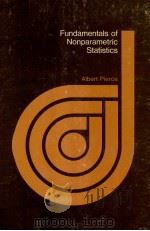
- FUNDAMENTALS OF NONPARAMETRIC STATISTICS
- 1970 DICKENSON PUBLISHING COMPANY.
-

- Statistical Extremes and Applications
- 1984 D.Reidel Publishing Company.
-
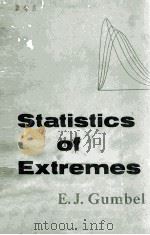
- Statistics of Extremes
- 1958 Columbia University Press
-

- Statistical extremes and applications
- 1984 D. Reidel Pub. Co. : Sold and distributed in the U.S.A. and Canada by Kluwer Academic Publishers
-
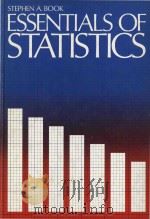
- Essentials of statistics
- 1978 McGrawHill
-

- PRINCIPLES OF MEDICAL STATISTICS
- 1955 THE LANCET
-
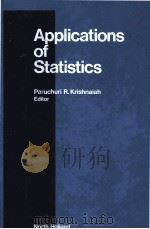
- APPLICATIONS OF STATISTICS
- 1977 NORTH-HOLL PUBLISHING COMPANY-AMSTERDAM
-

- FOUNDATIONS OF STATISTICS
- 1996 SAUNDERS COLLEGE PUBLISHING
-
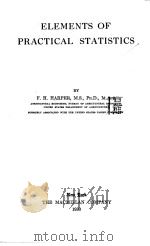
- ELEMENTS OF PRACTICAL STATISTICS
- 1930 THE MACMILLAN COMPANY
-
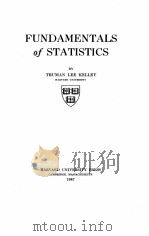
- FUNDAMENTALS OF STATISTICS
- 1947 HARVARD UNIVERSITY PRESS
提示:百度云已更名为百度网盘(百度盘),天翼云盘、微盘下载地址……暂未提供。➥ PDF文字可复制化或转WORD



